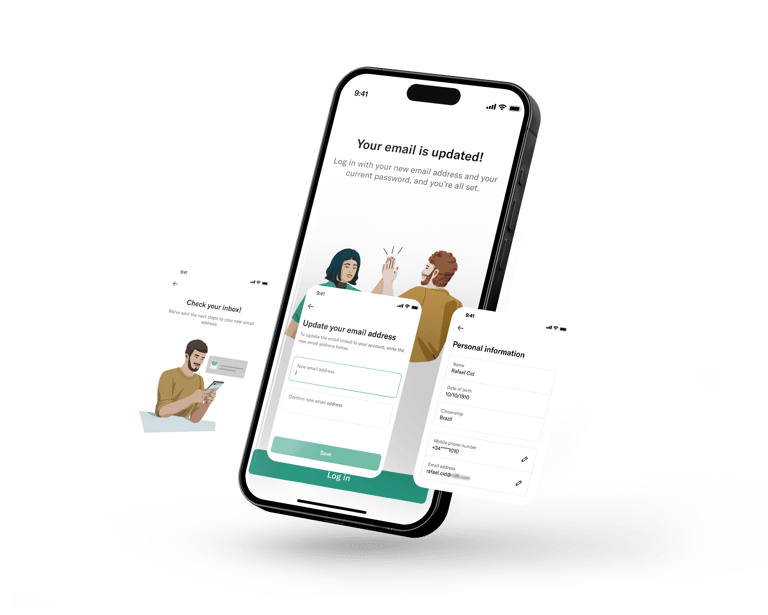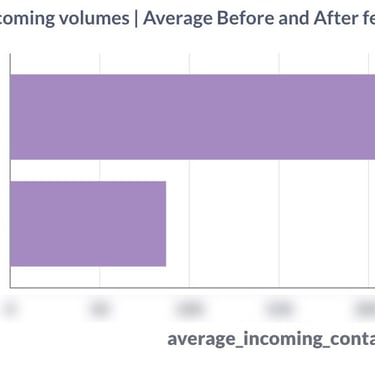
Change of email address at N26
A simple self-serve flow that drove a 70% reduction in support tickets and improved user experience
Context
Customers who wanted to update their registered email address had to contact customer support through the chatbot. This manual dependency led to:
Friction in the user experience, since other fields like phone number were already editable.
Unnecessary workload for customer support (CS) agents, creating hundreds of repetitive tickets daily.
Problem statement
Customers could not change their registered email address directly in the N26 app or on the web. This created frustration and increased unnecessary CS contact volume.
In this case, you will see how the design of a simple self-serve flow improved the customer experience while significantly reducing operational costs. By enabling users to change their email address directly in the app, we eliminated unnecessary support interactions and achieved a 70% reduction in daily contact volume.
Goals
Reduce friction in the experience of changing the email address in-app;
Decrease incoming CS contacts related to email changes.


Summary
Lean research and UX expert review
Given the limited time frame and the straightforward nature of the feature, the team adopted a Lean Research approach, combining quick validation loops and internal UX expert reviews to ensure quality without slowing delivery.
An internal usability test was then conducted with N26 employees to confirm that:
Users could easily find the entry point;
The interaction felt consistent with the existing “Change Phone Number” flow;
The confirmation and verification steps were clear, secure, and trustworthy.
This choice allowed us to move into development quickly and confidently.
Research & validation



Solution
Simple, straight to the point, and very effective.
Designing for happy and unhappy flows
The flow was designed collaboratively with engineering to ensure full alignment across Android and iOS platforms, covering every potential state and error scenario that could occur throughout the process.
Together, we mapped all possible failure points, such as network issues, verification errors, or invalid email formats, and defined how each one should be handled and communicated.




Screens of happy flow
Screens of unhappy flow

Results and impact
70% reduction in support contacts and an improved user experience by giving customers the autonomy to make the change themselves.
Conclusion
By turning a repetitive support request into a seamless self-serve experience, this project improved customer satisfaction and significantly reduced operational costs.
The email address change feature is the perfect example that even small, simple design interventions can create measurable impact when they connect user needs, business goals.


